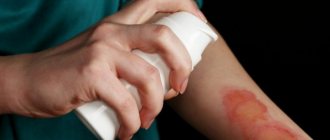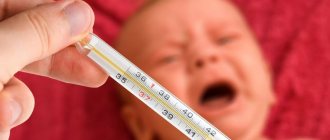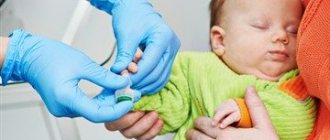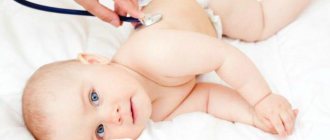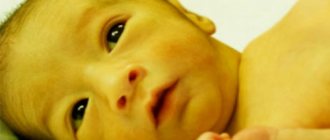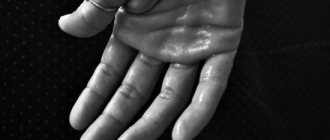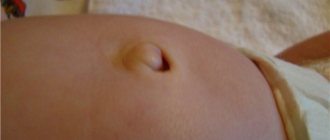Thermal burn in a child is a very common problem that few people have not encountered. Any parent should know what to do in such a situation in order not only to cure the baby, but also to calm him down and let him know that everything is under control. Since this is a common injury, a lot of remedies have long been developed to eliminate painful symptoms. However, the skin of children is much more tender, and the body as a whole is weaker, so there is less choice among such medications.
Severity of burn injury
Very often, a 1-2 degree thermal burn in a child is not perceived as something serious. Before drawing such conclusions, it is worth considering these two conditions in more detail.
- First degree. It is characterized by redness of the skin, itching, and mild pain, but children will feel it much more strongly than adolescents or adult patients. If a child’s thermal burn does not stand out in any other way, then, in principle, this is really the most successful scenario. It will not be followed by any serious complications, and the affected area can heal without outside help. But parents are naturally worried and do not leave these symptoms without drug therapy. Folk and traditional medicine will help relieve discomfort and provide support in accelerating the regeneration of injured tissues;
- Second degree. Here the symptoms and treatment will be more pronounced. A thermal burn in a child of this kind is accompanied by severe pain and the appearance of blisters with transparent, watery contents; under no circumstances should they be opened. These bubbles perform a protective function and prevent external infection from entering the body and spreading. If a very small child is injured, you should make sure that he does not damage the blisters before coming to the doctor. Such injuries can occur not only under the influence of high temperature, but also during prolonged contact, for example, with hot tap water. As already mentioned, children's skin is more sensitive and delicate. Any irritant that would be harmless to an adult can cause serious injury to children.
It is very simple to distinguish such wounds and will not be difficult even at the first examination.
Algorithm of actions
There are no childhood burns in nature that would not require emergency assistance at all. Since these injuries are very common in childhood and children usually receive them at home, it is simply necessary to know the rules of first aid. If a baby is burned, the algorithm of action should be clear and strict.
Assessment of the condition and extent of injury
First you need to understand how large and deep the burn is. Determining the degree of damage is not so difficult; parents do not have to be medical professionals to do this.
There are four stages of such lesions:
- With the first, only the surface of the skin is affected. This manifests itself as redness and slight swelling.
- In the second case, swelling and redness are complemented by the rapid formation of papules and vesicles. Bubbles and blisters are usually filled with clear or cloudy serous fluid.
The third degree is characterized by deeper lesions. With degree 3A, the outer and partially middle layers of the skin are burned. The wound appears dark and scabby. At grade 3B, subcutaneous tissue is visible from the blackened wound - the only thing that has survived. At this stage, the child no longer feels pain because pain receptors and nerve endings are damaged.
The fourth degree is the death of all layers of the skin, as well as darkening (and sometimes even charring) of the bones. There is no pain, but there is a high probability of developing a burn disease and shock, which are life-threatening.
The area of the lesion also matters. It is clear that in an emergency situation none of the parents will measure it with a ruler; for this, doctors have a “universal cheat sheet”. Each body part is approximately 9%. The exception is the genitals and perineum - this is 1%, the butt is 18%. However, in small children the proportions are different - their head and neck make up 21% of their body area.
If a child’s arms and stomach are damaged, this is 27% of the body, if only half of the arm is 4.5%, and if the head and stomach are damaged, then this is already 30%, and if the butt and legs are 36%.
If the burn is minor (stage 1-2), then an ambulance should be called if 10-15% of the body is affected. If the burn is 3-4 degrees, then more than 5% of the body is affected.
Allowed actions
After assessing the condition and calling an ambulance, parents should take care to cool the injury site. For this purpose, do not use ice; it is permissible to rinse the burn with running cool water - if the skin is not damaged, there are no ulcers or wounds. Then you can apply a diaper or sheet moistened with cool water to the damaged area.
If there is an open wound, you cannot wash it; you just need to cover the damaged area with a moistened cotton or linen cloth, lay the child down and wait for the ambulance to arrive.
Prohibited actions
First aid should not harm the baby, so you should not put anything on the burn. Fatty substances are especially dangerous - baby cream, ointments, sour cream and butter:
- You cannot anesthetize a child , as this will complicate medical diagnosis, because with degrees 3 and 4 of damage, the baby does not feel pain, and this is a diagnostic sign. If they tried to numb a 2-3 degree burn for the baby, the doctor may make a mistake with the diagnosis.
- You cannot apply bandages, tourniquets, or transport a child yourself , since at home it is impossible to assess all the risks, and the baby may have associated injuries - fractures, dislocations.
- You cannot try to treat the wound yourself , remove foreign objects from it, or remove scabs or scabs. This increases the risk of infection, bleeding and shock.
What can't you do?
In attempts to quickly relieve a child from pain and other unpleasant sensations, parents often make various mistakes. The list of what not to do includes the following:
- If, after receiving a burn, clothing is stuck to the problem area, it should not be pulled off. You will severely damage external and internal tissues, and also, with a high degree of probability, introduce an infection into the wound;
- If blisters form as a result of a thermal burn in a child, it is forbidden to open them yourself - only a doctor can do this. If necessary, he will carry out the procedure with sterile instruments in a clean room;
- Avoid various products based on oils and fatty products. You will only create a film at the site of injury, which will disrupt normal heat exchange and block the work of the sweat glands, which will increase and continue tissue damage;
- Do not apply brilliant green, iodine, alcohol solutions or hydrogen peroxide directly to the wound - this can cause additional chemical injury.
In what cases is it necessary to consult a doctor?
Thermal burns in children of 1st and 2nd degrees usually do not require hospitalization, but there are several points:
- If a 1st degree burn affects 90-100% of the skin area;
- Grade 2 injuries cover 30% of the body surface or more;
- A newborn or a child under three years of age was affected.
Important! The younger the patient, the greater the danger of thermal burns in children. There is a high probability of developing a burn disease with a small affected area.
First aid for thermal injury in a child
This is one of the most important points that should always be paid attention to when treating burns in children.
- Avoid further contact with fire or hot objects. Extinguish the flame, remove all possible sources of damage or remove the victim from them;
- Remove clothing from the injured area. If you can’t pull it together as usual, cut it;
- Cool the burn area with running water or a cold compress. To make the latter, wrap a couple of ice cubes in a cloth. The procedure must be done for 10-15 minutes;
- It is necessary to treat the damaged areas with Panthenol, Bepanten, Olazol, Rescuer, Pantestin, these drugs will help eliminate unpleasant symptoms;
Important! When treating a thermal burn in a child, before using any drug, first read the instructions, even if it was prescribed to you by a doctor.
- Apply a sterile bandage to the affected tissue area. This will not only eliminate external infection, but also partially prevent the baby from damaging the skin more;
- Throughout the entire process of providing first aid for a burn, try to calm the child, and for a 2nd degree injury, call a doctor or get to a medical facility yourself.
Features of pain relief from chemical burns
Chemical skin burns occur after exposure to aggressive reagents and chemicals on the skin. They are divided into deep and superficial. A distinctive feature of such burns is the absence of blisters (except in rare cases) and the appearance of rough ulceration with a dense scab due to the penetration of a foreign substance into the deep subcutaneous layers and cell necrosis. Tissues take a long time to heal after a chemical burn, but the skin regenerates poorly. After recovery, scars or deep scars often remain on it.
As a result of exposure to chemicals on the body that cause discoloration, pain, burning and other signs of a burn, the following procedures must be performed:
- Free the affected area of the body from clothing ;
- Rinse the area with running water for at least 15 minutes, trying not to touch the wound as much as possible (with the exception of aluminum powder. If it comes into contact with water, it may ignite);
- After washing off the reagent from the body, treat the affected area with a disinfectant mixture, the composition of which depends on the chemical components that caused the burn. If it was alkali, take vinegar and pour a little citric acid into it; if it’s lime, treat the wound with sweet water; and in case of a burn from acids, add half a teaspoon of soda to a glass of water;
- Apply cold to reduce pain;
- Apply a bandage if necessary.
Further anti-burn therapy
Thermal burns in children should be treated using medications of various groups:
- Antiseptic drugs. Apply when blisters or open wounds form. They impregnate bandages and apply them to the affected area for disinfection and subsequent protection from pathogenic flora.
- Chlorhexidine;
- Furacilin;
- Miramistin.
- Specialized products for the treatment of 1st and 2nd degree thermal burns in children.
- Panthenol;
- Bepanten;
- Olazol;
- Radevit;
- Rescuer;
- Dexpanthenol.
- Suprastin;
- Fenistil.
- Painkillers. They have strict instructions regarding the patient’s age, you need to pay attention to this. Doctors usually prescribe Ibuprofen or Paracetamol;
Traditional therapy
A minor thermal burn in a child can be treated without medication. But remember that if therapy does not produce results, or it only gets worse and the symptoms intensify, it is better to consult a specialist. The most popular recipes and remedies for treating childhood burns:
- Aloe vera juice. Apply a plant leaf cut lengthwise to relieve pain, disinfect the wound, relieve inflammation and redness;
- Compresses made from raw potatoes. A simple and affordable remedy that can relieve swelling and pain and cool the wound. Replace dressings as the product warms;
- After the damaged area has completely cooled, you can resort to sea buckthorn, propolis or St. John's wort oil (treat the wound and apply a sterile bandage on top);
- From time to time, grated fresh blueberries or carrots can be applied to the affected area;
- A decoction of calendula or chamomile in the form of lotions.
In the case of children, any injury, including thermal burns, can have much greater negative consequences than in episodes with adults. You should not waste time going to the doctor even with the first degree of damage. If it exceeds the second, such a technique is mandatory, as in episodes with newborns or small children under three years of age.
How to numb a burn at home?
There is a wide variety of folk recipes that can be used to numb a burn. How to relieve pain from a burn using traditional therapy?
- Grate raw potatoes on a fine or medium grater. Squeeze out excess juice. Apply sterile gauze to the burn site, apply potato pulp on top, then reapply the gauze bandage and secure the compress with a bandage. The application time of the compress is 15 minutes.
- Cut the aloe leaf in half. Apply the wet part of the leaf to the burn site. Secure with a bandage. Exposure time is up to half an hour.
- Prepare a decoction of oak bark. Soak a small piece of cotton wool in a cool broth and use it as a lotion.
If traditional recipes are ineffective and the pain from the burn does not go away, the victim needs to consult a doctor.
